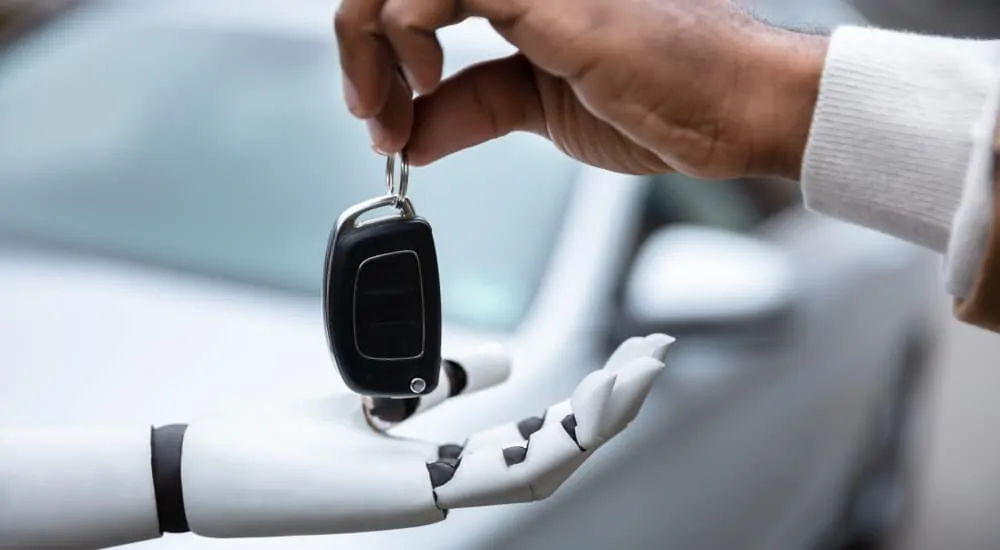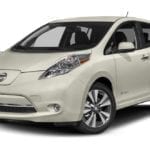These days, it seems that barely a day goes by where current auto news fails to make some sort of mention of autonomous driving. Perhaps it’s an automaker sharing their aggressive timeline for the development of a fully autonomous offering, or maybe the headline is based around the tech company that an automaker is partnering with to achieve this coveted goal. But with nearly every major manufacturer putting their hat in the ring, it harkens back to a particular chestnut from the original Jurassic Park which you might recognize.
“Your scientists were so preoccupied with whether or not they could, that they didn’t stop to think if they should.” — Jeff Goldblum as Dr. Ian Malcolm
Now granted, we’re talking about cars here, which is a lot different than the genetic resurrection of dinosaurs (although, that seems to be a recurring headline these days, as well). But whereas industry journalists and enthusiasts might be privy to the news flashes of advances in autonomous technology, let’s be honest, most of the headlines visible to the layperson revolve around accidents occurring during the testing of that technology.
Consider the story of the Arizona pedestrian killed in Tempe, simply because the ‘backup driver’ seated within the autonomous Uber vehicle was distracted (by of all things, an episode of “The Voice” that they were streaming on their phone). Security cameras within the vehicle confirmed the driver had been preoccupied with the episode for a 22-minute stretch before striking (and killing) a 49-year old victim.
While one might argue that these sort of stories are no different than any other examples of “fear culture” propagated by the media, ask yourself: are you ready to trust the safety, even the lives, of your loved ones to a 65 mph marriage of software and hardware? But more importantly, if you can answer yes (while complaining about the degrading performance of your phone or tablet) are you ready to trust other drivers, who are willing to put more faith in the reliability of said technology?
Now, we’re not here to deride autonomous technology any more than we’re here to praise it. That in mind, let’s look at what is described as the five levels of autonomy.
- First, Level 1 is reflective of many of today’s vehicles, with assistive technologies designed to support the driver, who always remains in control. Think of park assist, lane-stay or adaptive braking.
- Level 2 is described as ‘Partly Automated Driving’ where the systems can take control, but the driver remains responsible for operating the vehicle.
- Level 3, or ‘Highly Automated Driving’ allows the driver to disengage for extended periods of time, but only in select driving conditions.
- Level 4 is classified as ‘Fully Autonomous Driving’ where the vehicle operates independently most of the time, with the driver present to regain control if necessary.
- Level 5, or ‘Full Automation’ means that the vehicle assumes all functions, and any inhabitants are merely passengers with no control over the vehicle.
Now, consider the fact that automakers are racing towards Level 5, outlining aggressive timelines to offer full automation by 2022. We’re halfway through 2018, right now. Think of how quickly time has passed since the beginning of 2015. That is how long it will be before automakers want to start putting people behind the wheels of self-driving cars.
Now, humor me. The next time you’re behind the wheel, I challenge you to look at every driver that passes you in the opposite direction. How many of them have their eyes on the road vs. those who are clearly distracted, be it by a phone, or otherwise? In a world, where I’m hesitant to let my 13-year old embark on extended bike rides based around the threat of distracted drivers, I consider myself justifiably cautious.
But on a separate, yet related note, what have we become as global community where we’re prepared to relinquish the simple joy of driving? After all, its our collective love of driving, and the open road that has fueled the continual evolution of our vehicles. Whether you consider performance horsepower ratings, advances in sustainable EV offerings or the vast array of technology and amenities offered, today’s cars, trucks and SUVs are amazing creations. We should be more in love with driving (and passenger-ing) than ever. But I suppose it makes sense: we’ve surrendered so many simple joys of life for the sake of convenience, it was only a matter of time until driving fell by the wayside, too.
Then again, I know more people that share my mindset than those who don’t (and if you’re here with me, you’re most likely in the same boat) of people who aren’t prepared to (i) trust autonomous technology in its infancy, or (ii) give up the happiness that driving can bring. As the advances come, we might surely be looked upon as dinosaurs in our own right, but it will inevitably force a delay in the widespread integration of the technology. So, if you count yourself among our ilk, breathe easy. Autonomous vehicles might be ready by 2022, but it’ll likely be another decade before they truly become affordable, controlling – in essence – their widespread integration. Factor in another decade (at minimum) to phase out the non-autonomous models that represent the majority and it’s with confidence that we look at a quarter of a century (or longer) before those of us who love driving are forced out from behind the wheels of our vehicles.
I’m just kidding…I think.




